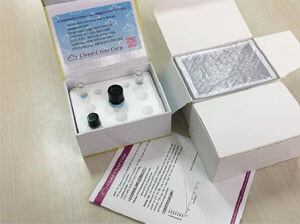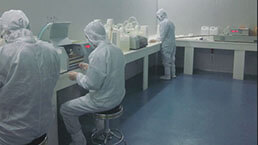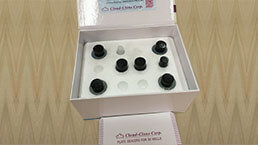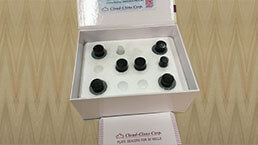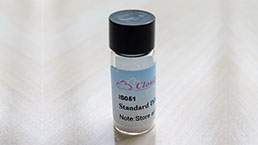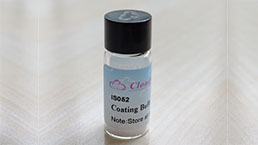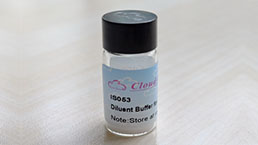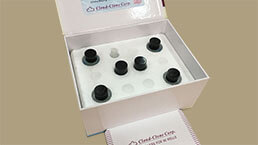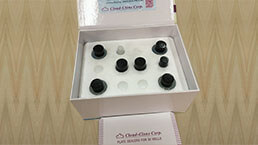ELISA Kit DIY Materials for Apolipoprotein B (APOB) 

Apo-B; FLDB; Apo B-100
- UOM
- FOB US$ 1,368.00 US$ 2,280.00 US$ 4,104.00 US$ 7,980.00 US$ 13,680.00
- Quantity
Overview
Properties
- Product No.KSC003Ra01
- Organism SpeciesRattus norvegicus (Rat) Same name, Different species.
- ApplicationsMain materials for "Do It (ELISA Kit) Yourself".
Research use only - Downloadn/a
- CategoryMetabolic pathwayEndocrinologyCardiovascular biologyHepatologyNutrition metabolism
- Reagent Contents Capture Antibody, Detection Antibody, Standard, Streptavidin-HRP, TMB Substrate, 96-well Plate
- Detectable SampleSerum, plasma and other biological fluids.
- Applicable PrincipleDouble-antibody Sandwich ELISA for Antigen Detection
- Detectable Range6.25-400ng/mL
- Applicable Sensitivity2.92ng/mL
Sign into your account
Share a new citation as an author
Upload your experimental result
Review

Contact us
Please fill in the blank.
Specifity
The Abs in the kit have high sensitivity and excellent specificity for detection of Apolipoprotein B (APOB). No significant cross-reactivity or interference between Apolipoprotein B (APOB) and analogues was observed.
Usage
1. Coat the plates with 100μL per well of working solution of Capture Antibody.incubate overnight at 4°C or incubate at 37°C for 2 hours.
2. Aspirate and wash 1 time.
3. Block the plates with 200 μL per well of working solution of Blocking Buffer. Incubate at 37°C for 1.5 hours.
4. Aspirate and wash 1 time. The plates are now ready for sample detection, the protocol is the same as regular ELISA.
Storage
Antibodies, Standard and Streptavidin-HRP should be stored at -20°C. TMB should be stored at 4°C. 96-well Plate could be stored at room temperature. The contents are valid for twelve months. They are stable for one month after opening when stored at 4°C.
Support pack
Giveaways
Increment services
Citations
- Group 1B phospholipase A2 deficiency protects against diet-induced hyperlipidemia in miceJlr: M019463
- Elevated retinol binding protein 4 induces apolipoprotein B production and associates with hypertriglyceridemiaPubmed:25781360
- Culturing of HepG2 cells with human serum improve their functionality and suitability in studies of lipid metabolismPubMed: 26515253
- Hypoascorbemia induces atherosclerosis and vascular deposition of lipoprotein (a) in transgenic micePubMed: 26064792
- Proprotein convertase subtilisin/Kexin type 9 (PCSK9) single domain antibodies are potent inhibitors of LDL receptor degradationPubmed:27284008
- COMPOSITIONS AND METHODS FOR EFFICACIOUS AND SAFE DELIVERY OF SIRNA USING SPECIFIC CHITOSAN-BASED NANOCOMPLEXESy2016:0152988.html
- Hops (Humulus lupulus) Content in Beer Modulates Effects of Beer on the Liver After Acute Ingestion in Female Mice.pubmed:27659607
- Change in the Lipid Transport Capacity of the Liver and Blood during Reproduction in Ratspubmed:28798692
- Wild Lonicera caerulea berry polyphenol extract reduces cholesterol accumulation and enhances antioxidant capacity in vitro and in vivoPubmed:29580541
- Consumption of orange fermented beverage improves antioxidant status and reduces peroxidation lipid and inflammatory markers in healthy humansPubmed:29124773
- The effect of exenatide (a GLP-1 analog) and sitagliptin (a DPP-4 inhibitor) on plasma platelet-activating factor acetylhydrolase (PAF-AH) activity and concentration in?…Pubmed: 30768981
- Hepatic HuR modulates lipid homeostasis in response to high-fat dietPubmed: 32546794
- Study of in Vivo Serum Lipid Regulation with Ulmus macrocarpa Hance Extract in Rats
- GP73 is a TBC-domain Rab GTPase-activating protein contributing to the pathogenesis of non-alcoholic fatty liver disease without obesity34853313




